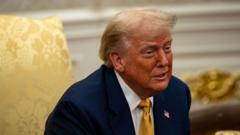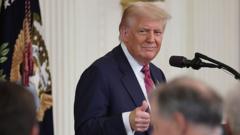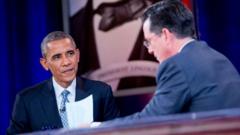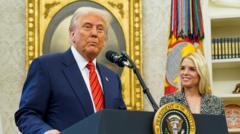**The article explores Donald Trump's legal challenges, the implications of recent Supreme Court rulings, and the resulting tension between executive authority and the judiciary.**
**Trump's Legal Maneuvers: A Revolution in Presidential Authority**
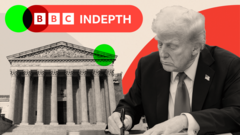
**Trump's Legal Maneuvers: A Revolution in Presidential Authority**
**The unprecedented legal strategies employed by Trump signal a potential shift in the balance of power within the US government.**
As May 2024 progressed in lower Manhattan, anticipation mounted outside the courthouse where Donald Trump faced charges related to hush money payments. On an unassuming afternoon, a verdict was reached after a prolonged jury deliberation, marking a historical moment as Trump became the first former president to be convicted of a felony. Subsequent coverage highlighted the landscape of Trump's legal challenges, which had proliferated nationwide. Fast forward a year, and Trump's legal hurdles are juxtaposed by Supreme Court decisions offering him newfound leverage, with rulings granting broad immunity to presidents and limiting judicial overreach.
Since reshaping the Supreme Court, Trump has subsequently trained his sights on the lower judiciary, prompting a backlash from federal judges as they grapple with accusations and threats stemming from the administration's aggressive rhetoric. Observers specializing in judicial processes have voiced concerns about an "attack" on the integrity of courts—judges now contend with a litany of threats, including violence stemming from the president's inflammatory comments.
The conflict has escalated to such a degree that certain judges have noted unprecedented levels of hostility not typically encountered in previous administrations. Figures from the U.S. Marshals Service highlighted a worrying trend where threats against judges surpassed totals seen in prior years, with public discourse intensifying around calls for judges to face consequences when rulings do not align with executive expectations.
Despite the dramatic escalation of executive orders issued by the Trump administration—exceeding over 140 during his tenure—opposition was met with rapid legal challenges, reinforcing the judiciary's role as a crucial check on the presidency. Trump's reliance on executive orders positioned him as a powerful figure, yet with such power comes the risk of judicial pushback, evidenced by recent rulings that have temporarily stymied some initiatives.
The balance of power amongst the branches of government teeters on the brink, with critics flagging that Trump's approach could permanently alter governance frameworks that have traditionally designated the executive, legislative, and judiciary as separate but equal. Constitutional scholars warn that allowing messages of defiance against the judicial branch may undermine foundational principles of accountability and law.
Though Trump's administration asserts judicial "activism" hampers the will of the people, legal experts argue this mindset overlooks the fundamental rights enshrined in the Constitution. The challenges presented to judicial authority could result in unintended consequences, leading to a dynamic yet unpredictable relationship between current and future administrations and the courts.
As the legal stare-down continues, judges are poised to push back against executive overreach, suggesting that the ultimate outcome of these battles will significantly shape the United States' political landscape for years to come.
Since reshaping the Supreme Court, Trump has subsequently trained his sights on the lower judiciary, prompting a backlash from federal judges as they grapple with accusations and threats stemming from the administration's aggressive rhetoric. Observers specializing in judicial processes have voiced concerns about an "attack" on the integrity of courts—judges now contend with a litany of threats, including violence stemming from the president's inflammatory comments.
The conflict has escalated to such a degree that certain judges have noted unprecedented levels of hostility not typically encountered in previous administrations. Figures from the U.S. Marshals Service highlighted a worrying trend where threats against judges surpassed totals seen in prior years, with public discourse intensifying around calls for judges to face consequences when rulings do not align with executive expectations.
Despite the dramatic escalation of executive orders issued by the Trump administration—exceeding over 140 during his tenure—opposition was met with rapid legal challenges, reinforcing the judiciary's role as a crucial check on the presidency. Trump's reliance on executive orders positioned him as a powerful figure, yet with such power comes the risk of judicial pushback, evidenced by recent rulings that have temporarily stymied some initiatives.
The balance of power amongst the branches of government teeters on the brink, with critics flagging that Trump's approach could permanently alter governance frameworks that have traditionally designated the executive, legislative, and judiciary as separate but equal. Constitutional scholars warn that allowing messages of defiance against the judicial branch may undermine foundational principles of accountability and law.
Though Trump's administration asserts judicial "activism" hampers the will of the people, legal experts argue this mindset overlooks the fundamental rights enshrined in the Constitution. The challenges presented to judicial authority could result in unintended consequences, leading to a dynamic yet unpredictable relationship between current and future administrations and the courts.
As the legal stare-down continues, judges are poised to push back against executive overreach, suggesting that the ultimate outcome of these battles will significantly shape the United States' political landscape for years to come.


